Yup, it’s that time of year again for us Hindus. What other way would we celebrate than with some mithai. Mithai (pronounced as mee-tie), Hindi for sweets, is one of the most important aspects of Indian cuisine.
Scratch that. It is the most important aspect of Indian cuisine (in the humble opinion of sweet-toothed Indian families everywhere).
In fact, desserts are so major in my family that eating dessert before even the appetizers are served is encouraged and fairly normal (I would like to take this time and assure my Mama Mishra that I intend on passing this tradition down to future generations).
So without further ado here’s a countdown of Indian confections you need to be consuming this Diwali (and year round, if possible):
Badusha (pronounced bah-doo-shuh)
These tasty fritters are a popular South Indian sweetmeat that are made specifically during the Diwali season. Best served piping hot, badushas are flaky on the outside with a slightly chewy center and the flavor profile is similar to that of donuts.
Barfi (pronounced buhr-fee)
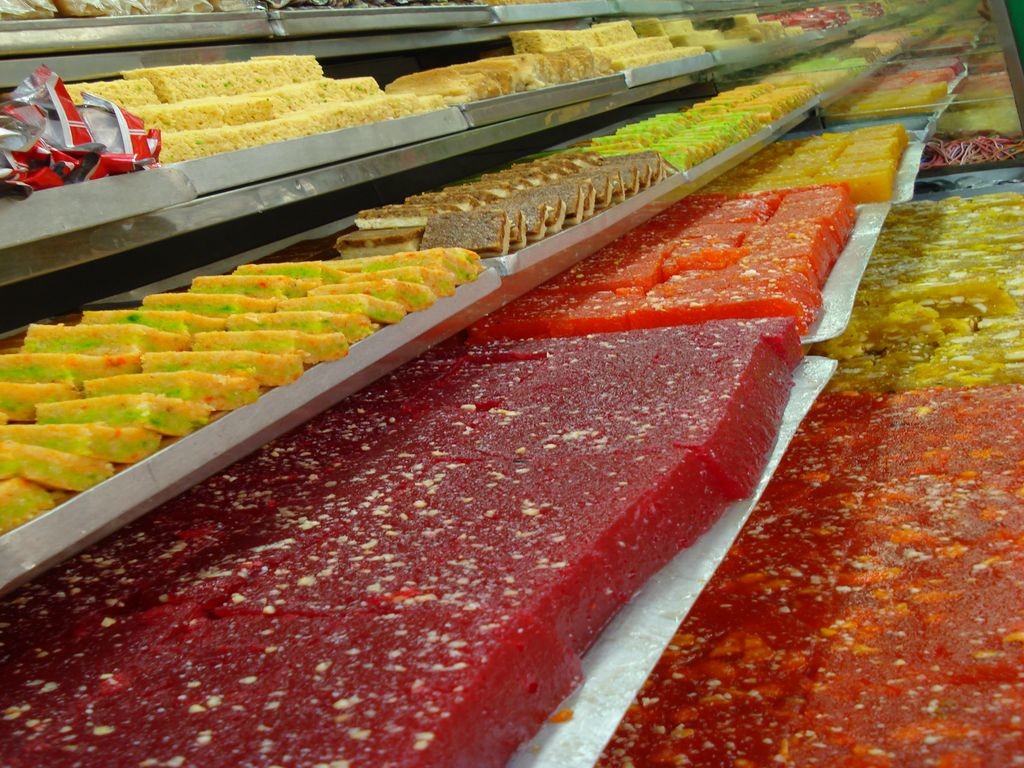
Photo courtesy of Dipanker Dutta
I promise that it tastes better than its spelled. Named after the Hindi word for snow/ice, the cooking process for making barfi is very similar to that of making fudge in the Western world. Barfi is typically nut-based so the most common flavors are cashew, almond, peanut, and pistachio. And lucky ducky for you readers because over the years my mom adapted a family friend’s recipe and she’s willing to share.
Also during Diwali time, popular variations of barfi in some regions of India include chickpea flour or coconut.
Gajar Halwa (pronounced gah-juhr hul-wah/hul-vah)
This type of milk pudding is extremely popular during important holidays such as Diwali, Holi, and Eid-al-fitr in Northern India and Pakistan. Gajar halwa gets its beautiful bright orange color from the use of shredded carrots (known as gajar in Hindi). Traditional variations include sooji (semolina) halwa, atta (wheat) halwa, and badam (almond) halwa, whereas modern variations include beetroot halwa and pumpkin halwa.
Gulab Jamun (pronounced ghoul-ahb jah-moon)
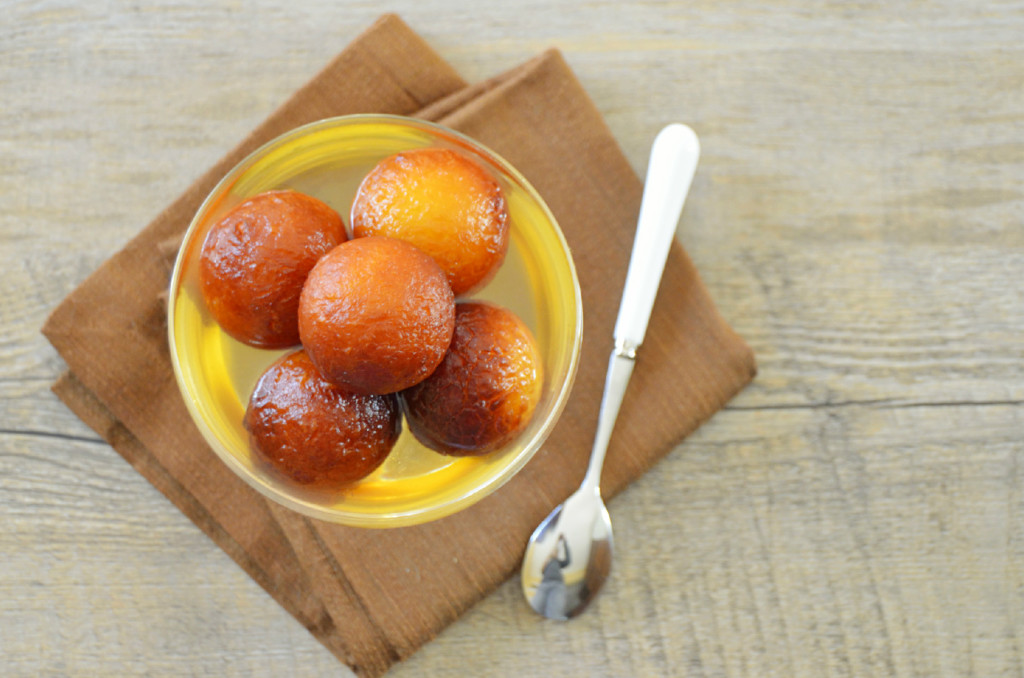
Photo courtesy of Michelle Peters-Jones
Call ’em Lays because I betcha can’t just eat one. No, seriously because these delicious orbs of milk solids are pretty damn irresistible. Especially when they’re swimming in the most fragrant pool of sucrose goodness known to South Asian cuisine. Since they’re fairly easy to make, gulab jamun can be found in nearly every Indian feast.
Jalebi (pronounced either jill-eh-bee or juhl-eh-bee)
This crispy confection is responsible for more than half of the diabetes cases diagnosed among Indians quarterly. My Sahara desert-dry humor aside (the desert pun may or may not be intended), jalebi is basically the Indian lovechild of a funnel cake and pretzel — except with a wheat flour-based batter. And rather than being garnished with a dust of powdered sugar, jalebi is soaked in an extremely sticky syrup after frying. One of the greatest weaknesses among children and adults alike.
Ladoo (pronounced lah-doo)
Most often served at weddings and other special occasions, ladoo contain complex layers of delicate flavor and are available in countless forms — and everybody has a particular favorite. But be careful: an old proverb states that if you eat too many, you might turn into one.
Kaju Katli (pronounced kah-joo cut-lee)
What distinguishes kaju katli from kaju barfi is the cooking process (milk is used in kaju barfi, the cashews are first soaked overnight in kaju katli). So unless you are an Indian dessert purist, the two are relatively interchangeable.
Kheer (pronounced as spelled)
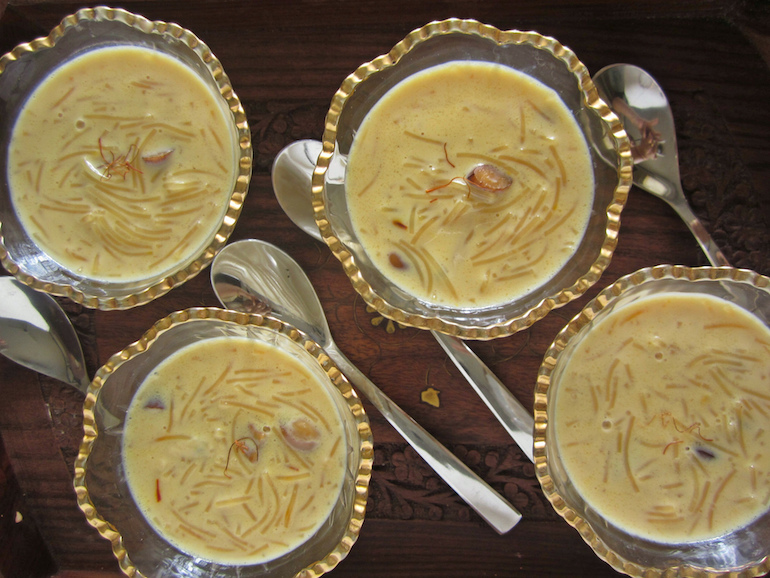
Photo courtesy of Divya Kudua
Also referred to as payesh or payasam in certain regions of India, this South Asian rice pudding can be made in a multitude of ways. Rice can be substituted with either broken wheat, vermicelli, or tapioca pearls — my personal favorite. Since this dish is frequently served as prasad (an offering to Hindu deities), kheer is consumed at almost every Hindu festival.
Mishti Doi (pronounced mish-tee dhoy-ee)
Just between us, I’m 100% sure that I was named after this popular East Indian delicacy — which probably explains why I love it so much. I mean what’s not to love about yogurt, milk, and sugar that has been fermented/baked to perfection? Since yogurt is considered auspicious in the Hindu religion, it is common to find mishti doi during any important Hindu festival in East India traditionally served in terra cotta (clay) ramekins.
Mysore Pak (pronounced my-soor paak)
Mysore pak is one of the richest desserts possibly found in South India considering the main ingredients are clarified butter (ghee), sugar, chickpea flour, and sometimes cardamom — did I mention ghee and sugar? Mysore pak is often served during special occasions such as weddings, baby showers, and of course — holiday festivities.
Peda (pronounced pay-dah)
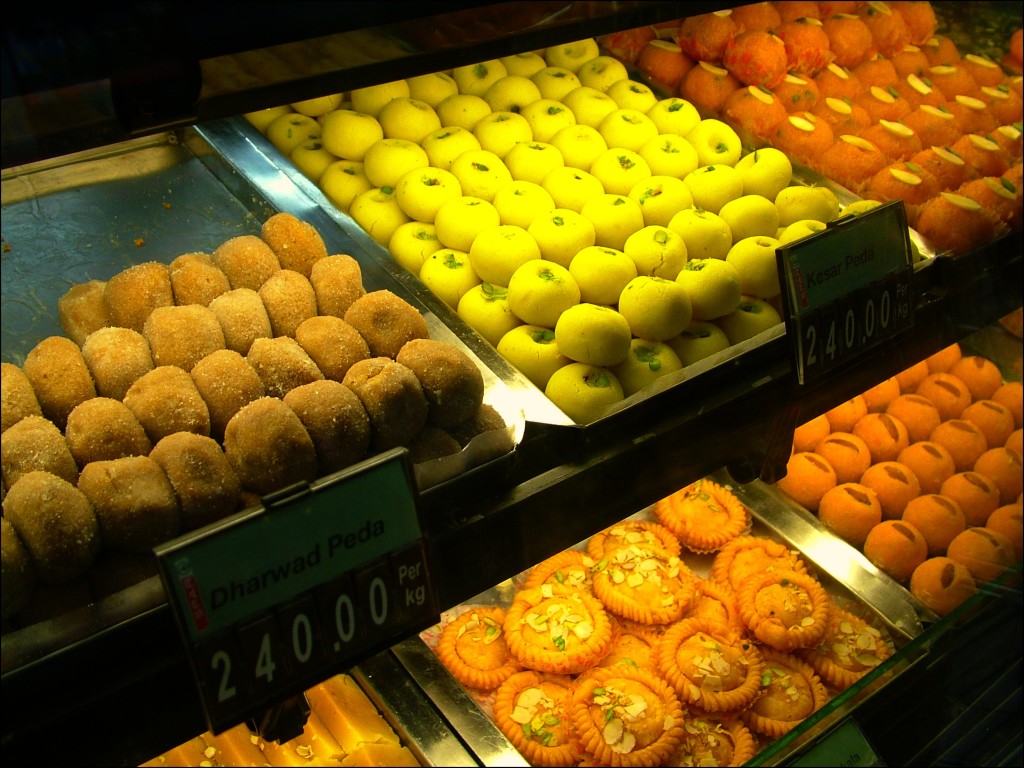
Photo courtesy of Anshu
Originating from the Indian state of Uttar Pradesh, peda is a dessert made from khoa (a South Asian dairy product), sugar, cardamom seeds, pistachio nuts, and occasionally saffron. They can range in color from an off-white to a caramel and sometimes an orange or yellow. Peda is frequently associated with religious services since it is often times used as offerings to Hindu deities (prasad).
Pongal (pronounced pohn-guhl)
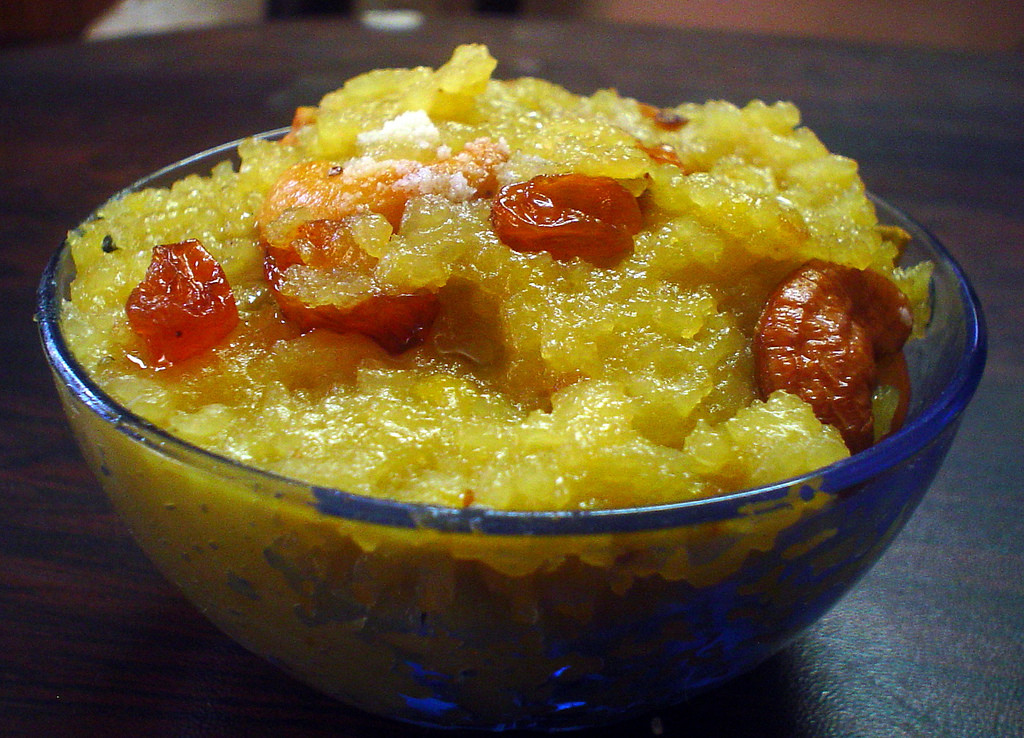
Photo courtesy of Balamurugan Natarajan
Pongal is a rice dish that originates from the state of Tamil Nadu in India that is available in both sweet and savory forms. The sweet version, particularly known as sakarai pongal, is usually prepared in temples during festival time to be served as prasad.
Rasgulla (pronounced ross-ghoul-uh or russ-ghoul-uh)
Although there is much debate as to which part of East India the rasgulla comes from, there is no debate that this stuff this truly out-of-this-world bomb diggity delish. The dish is prepared by forming cottage cheese into bite-size spheres which are then submersed in a pot of boiling sugar syrup. Fun fact: the ISRO (Indian Service Research Organization) is currently working to create dehydrated rasgulla as one of the dishes Indian astronauts will be able to enjoy in their upcoming 2016 space mission.
Rabri (pronounced rah-bee-dee)
Although this dairy-based dessert is mostly prepared in north, central, and western India, rabri is cherished by all. It can be served either hot or cold. Some people even like to use rabri as a dipping sauce for either roti or jalebi.
Rasmalai (pronounced as russ-muhl-eye)
This sweetmeat is probably one of the richest desserts you will ever find on India’s eastern coast. Rasmalai consists of melt-in-the-mouth cottage cheese patties which are soaked in a flavorful clotted cream (malai) sauce.
Sandesh (pronounced sone-dhay-sh)
This Bengali confection can be traced back several centuries and is made of cottage cheese that has been combined with sugar and other flavorings which is then molded into various shapes.
Sohan Papdi (pronounced so-uhn paap-ih-dee)
Commonly referred to as “Indian Cotton Candy” this stuff is guaranteed to be finished within seconds of opening the lid to the box it’s packaged in. Made of sugar, chickpea flour, ghee, milk, and cardamom, sohan papdi hails from the North Indian state of Punjab.
Shrikhand (pronounced shree-khun-dh)
Native to the state of Gujarat, shrikhand is made of strained yogurt (also referred to as hung curd in some recipes) which is then combined with cardamom, saffron, and sometimes mango pulp and garnished with chopped nuts. The flavor profile is similar to that of mishti doi however the texture of shrikhand is more pudding-like whereas mishti doi is rather stiff due to the baking/fermentation process.


